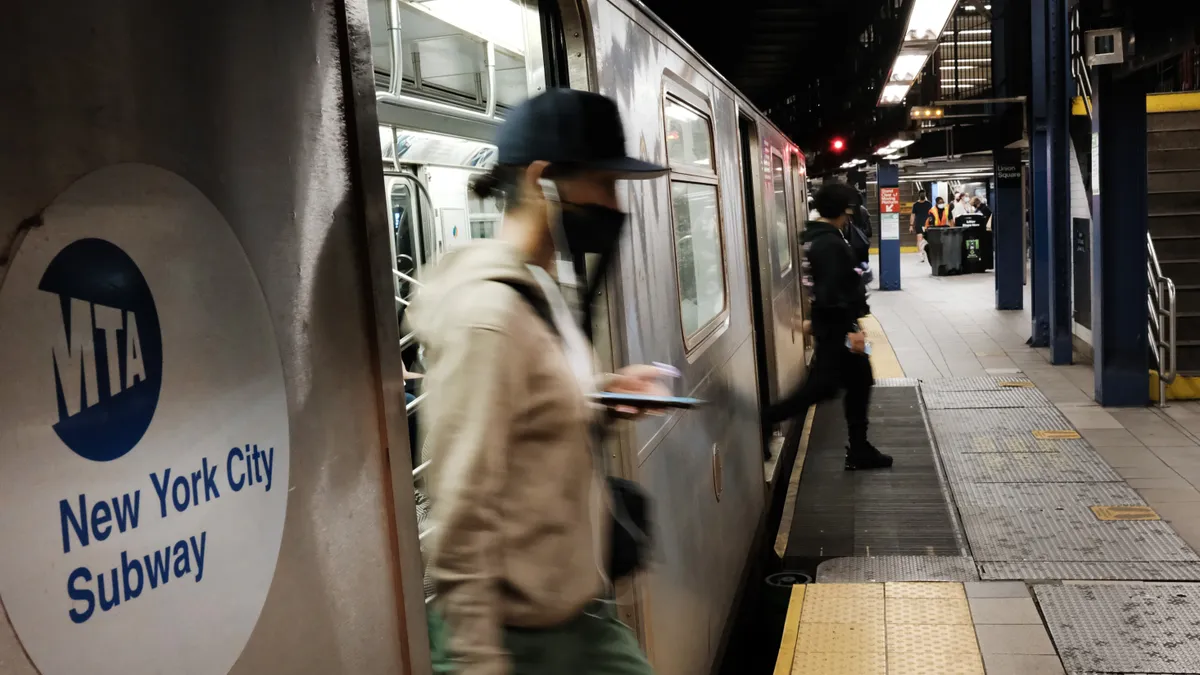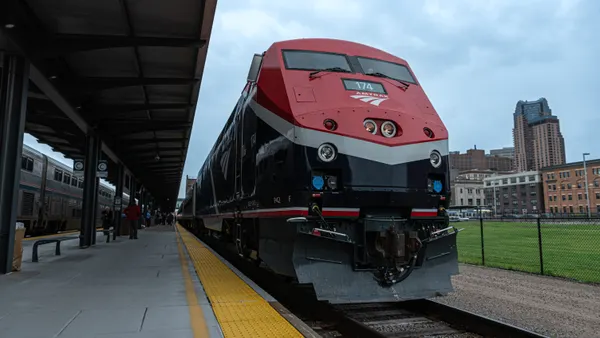Dive Brief:
- By 2055, the Metropolitan Transportation Authority will add elevators or ramps, as an alternative for people who can’t use stairs, to 95% of the currently inaccessible New York City subway stations.
- A settlement agreement between the MTA and a range of accessibility advocates, which is subject to a finalization process, would resolve multiple class action lawsuits, according to an MTA announcement Wednesday.
- MTA operates 472 stations, only 126 of which are fully accessible to customers with disabilities. The agreement stipulates that MTA procure contracts to upgrade 81 stations by 2025, another 85 stations by 2035, an additional 90 stations by 2045, and the remaining 90 stations by 2055. MTA’s capital plan for 2020 through 2024 outlines $5.2 billion for accessibility upgrades.
Dive Insight:
The issue has been on the city’s radar for years. The earlier of the two lawsuits dates back to 2017. And a 2018 report from the city comptroller’s office found that nearly 200,000 New Yorkers with disabilities lived in neighborhoods that lacked a single accessible subway station. The benefits of future elevators and ramps will apply not just to people living with a disability but potentially to millions of older people and thousands of families seeking to navigate the city with strollers, MTA’s announcement acknowledged.
New York City has been slow to upgrade compared to other major cities with legacy transit systems like Chicago and Boston, said Kenneth Shiotani, senior staff attorney at the National Disability Rights Network. Among the reasons why New York City is so far behind is the transit authority has a history of leaving out accessibility when planning station rehabilitation, and it resisted lawsuits harder than other cities, Shiotani said. “Agreeing to a firm timeline is good, but it’s a very long timeline.”
MTA has completed accessibility projects at a total of 15 stations since 2020, according to the announcement, which stated that MTA “was dealing with a dire financial crisis brought on by the COVID-19 pandemic.” The transit agency added it’s awarded contracts for an additional 22 stations and that another 13 projects are currently in the procurement stage.
MTA also noted certain caveats. First, the agreement requires court approval, a notice period where class members will have the opportunity to comment, and a fairness hearing before being finalized. MTA’s commitment is then “subject to extensions of time based on funding commitment caps and other contingencies,” the announcement said.
MTA CEO Janno Lieber also suggested Wednesday, in response to reporter questions, that the ability to fund many accessibility improvements may be contingent upon money generated from implementing congestion pricing. The program would charge drivers in certain parts of Manhattan, raising money to support MTA’s multiyear capital plan. Lieber subsequently said in a separate media interview Thursday that the program is expected to launch at the end of 2023 or early 2024.
"It's up to the governor and federal officials to start congestion pricing and raise the revenue needed to upgrade hundreds of subway stations for full accessibility. With gridlock, pollution, and carbon emissions compromising New York's recovery, the time is now to implement congestion pricing and deliver the reliable, accessible subway New York needs and deserves,” Riders Alliance Policy & Communications Director Danny Pearlstein said in a press statement.
At the federal level, the All Stations Accessibility Program Act introduced last year was ultimately included in the Infrastructure Investment and Jobs Act that passed in the fall. The version that was signed into law lays out $350 million per year through 2026, for competitive grants to help finance accessibility upgrades in public transportation systems for people with disabilities so that more facilities meet or exceed ADA construction standards.













